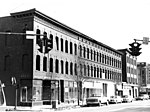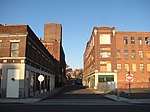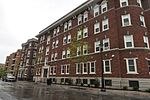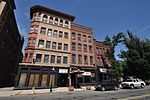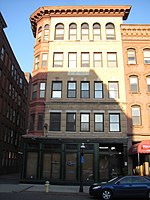Evans Court Apartment Building
Apartment buildings in Springfield, MassachusettsApartment buildings on the National Register of Historic Places in MassachusettsNational Register of Historic Places in Springfield, Massachusetts

The Evans Court Apartment Building is a historic apartment building at 22-24 Winthrop Street in the South End of Springfield, Massachusetts. Built in 1910, it is a good example of a Classical Revival apartment house, and one of the first to be built in the city after it introduced a new fire code. Rehabilitated in 2014, the building was listed on the National Register of Historic Places in 2015.
Excerpt from the Wikipedia article Evans Court Apartment Building (License: CC BY-SA 3.0, Authors, Images).Evans Court Apartment Building
Winthrop Street, Springfield
Geographical coordinates (GPS) Address Nearby Places Show on map
Geographical coordinates (GPS)
| Latitude | Longitude |
|---|---|
| N 42.098333333333 ° | E -72.582222222222 ° |
Address
Winthrop Street 32
01105 Springfield
Massachusetts, United States
Open on Google Maps


